Shennong – Chinese ‘King Of Medicines’ Who Invented Farming Tools And Herbs For Treating People’s Diseases
A. Sutherland - AncientPages.com - Over millennia, Chinese people have been influenced by different religious, philosophical, and spiritual teachings, including Confucianism, Buddhism, and Taoism. They historically have had a significant impact on the development of Chinese culture and religion.
Shennong (Japanese Shinnnō) in a Japanese hanging scroll (19th century). Public domain
Among many gods worshiped by the Chinese people is Shennong, also known as Shen Nung ("Divine Farmer" or "Divine Husbandman"), a mythological Chinese ruler who has become a deity in Chinese and Vietnamese religious beliefs. He is worshiped as a cultural hero in China and Vietnam and a patron of medicine, forestry, and agriculture, whose beginnings are linked to Shennong.
As Yan Emperor (the Flame Emperor) - the first Emperor of ancient China - Shennong invented farming tools and herbs for treating his people's diseases. He could heal sick people, which significantly contributed to his great popularity. He taught how to cultivate and harvest different species of cereals and introduced the use of buffalo carts.
He is considered one of the wisest divine figures of the Chinese pantheon, alongside immortal deities like Lu Tung-Pin and Han Hsiang-Tzu.
However, even much earlier, the image of Shennong was closely related to the deity Yan-di, who lived around 3,000 BC and was the second of the "Three Kings," believed to be legendary Chinese emperor deities. He's also considered an ancestor of the Yellow Emperor (Huangdi or Huang-ti) (27th century BC), who, it is said, lived in those misty reaches of time before the Shang dynasty. During his reign, Huangdi introduced writing, wooden houses, boats, carts, and the bow and arrow to the Chinese people.
He also taught them how to make ceramics and cook on coals. He founded a marketplace where people could exchange products and goods, which significantly improved the quality of people's lives.
Shennong - the Farmer God, tasting herbs to discover their qualities. Public Domain
Mystic surrounds this legendary deity, and ancient Chinese legend says he was born after his mother first saw a fantastic dragon. Born in the 28th century BC, Shennong was very similar to other mythical creatures. He had a man's face, the body of a snake, the head of a bull, while his nose was that of a tiger.
He was also green, which was the symbol of the color of vegetation.
The legend continues that after the birth of this divinity, nine wells suddenly appeared in the ground. Millet fell from the sky in the form of rain, and Shennong immediately began to plow the land and sow millet, and so, he considered the ancestor of agricultural implements.
In addition, he is also believed to be the first so-called pharmacologist, usually portrayed as an older man in a garment covered with leaves, which he is also holding in his hands. Plants and fruits are hanging from his neck. His other depictions show him as a young man carrying a basket of plants.
With his red whip, Shennong whipped herbs to determine their healing properties and taste qualities.
According to an ancient legend, the inhabitants of the "kingdom of white people" Baimingo gave Shennong a unique animal, 'yaoshou' ("medicinal beast"). If someone got sick, it was only necessary to pat this beast on the back, telling him about the sick, as 'yaoshou' immediately ran away to find the grass he needed for healing.
Shennong is credited with the discovery of tea as a medicinal remedy and a refreshing drink.
He Died Unexpectedly
Death came to Shennong quite unexpectedly. He tried all kinds of herbs to discover their medicinal properties, thus identifying and classifying the different species of plants, both poisonous and medicinal. This process of experimentation led to the creation of Chinese medicine and the discovery of different flavors (sweet, spicy, salty, bitter, and sour).
Tradition has it that he accidentally swallowed a millipede and died because its legs turned into worms. Another version says he was trying to taste seventy poisonous plants on himself.
The beginning of trade is also associated with Shennong because he organized the first bazaars where products were exchanged. In late Chinese mythology, he is also referred to as the patron of medicine, and sometimes he is called Yao-wang ("king of medicines"). His greatest legacy is all the knowledge he acquired and was passed on to humans.
Updated on February 14, 2024
Written by – A. Sutherland - AncientPages.com Senior Staff Writer
Copyright © AncientPages.com All rights reserved. This material may not be published, broadcast, rewritten or redistributed in whole or part without the express written permission of AncientPages.com
More From Ancient Pages
-
 Secrets Of Neanderthals’ 130,000-Year-Old Carved Bear Bone Found In The Carpathian Mountains
Archaeology | May 24, 2024
Secrets Of Neanderthals’ 130,000-Year-Old Carved Bear Bone Found In The Carpathian Mountains
Archaeology | May 24, 2024 -
 Secrets Of Mica Chambers Of Teotihuacan
Ancient Technology | Jun 12, 2020
Secrets Of Mica Chambers Of Teotihuacan
Ancient Technology | Jun 12, 2020 -
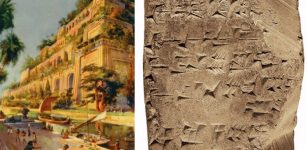 Modern Banking Concept Started In Ancient Babylonian Temples
Ancient History Facts | Mar 7, 2016
Modern Banking Concept Started In Ancient Babylonian Temples
Ancient History Facts | Mar 7, 2016 -
 Unusual High-Tech Machine In The Bible Offers Evidence Of Lost Ancient Advanced Civilization
Ancient Mysteries | Aug 18, 2018
Unusual High-Tech Machine In The Bible Offers Evidence Of Lost Ancient Advanced Civilization
Ancient Mysteries | Aug 18, 2018 -
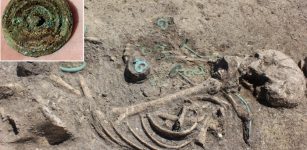 A Sensational Bronze Age Grave Of 20-Year-Old Elite Woman Found In Town Of Mány, Hungary
Archaeology | Aug 8, 2022
A Sensational Bronze Age Grave Of 20-Year-Old Elite Woman Found In Town Of Mány, Hungary
Archaeology | Aug 8, 2022 -
 Rare Byzantine Gold Coin Discovered In Norway – Was It Brought By Harald Hardrada From Constantinople
Archaeology | Dec 12, 2023
Rare Byzantine Gold Coin Discovered In Norway – Was It Brought By Harald Hardrada From Constantinople
Archaeology | Dec 12, 2023 -
 Earliest Evidence Of A 260-Day Maya Calendar Found Inside Guatemalan Pyramid
Archaeology | Apr 14, 2022
Earliest Evidence Of A 260-Day Maya Calendar Found Inside Guatemalan Pyramid
Archaeology | Apr 14, 2022 -
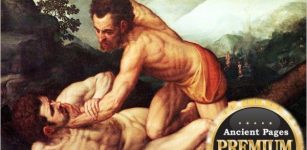 Was The Discovery Of Biblical Abel’s Giant Grave In Syria Covered-Up?
Ancient Mysteries | Oct 28, 2014
Was The Discovery Of Biblical Abel’s Giant Grave In Syria Covered-Up?
Ancient Mysteries | Oct 28, 2014 -
 On This Day In History: Coverdale Bible Printed In English For The First Time – On Oct 4, 1535
News | Oct 4, 2016
On This Day In History: Coverdale Bible Printed In English For The First Time – On Oct 4, 1535
News | Oct 4, 2016 -
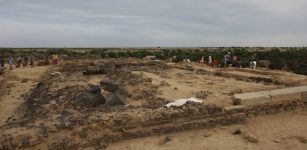 African Kingdom Of Axum – Ancient Ruins Of Early Churches Unearthed
Archaeology | Dec 9, 2022
African Kingdom Of Axum – Ancient Ruins Of Early Churches Unearthed
Archaeology | Dec 9, 2022 -
 Warming Of North Pacific Helped First Human Migration From Asia To North America
Archaeology | Dec 15, 2020
Warming Of North Pacific Helped First Human Migration From Asia To North America
Archaeology | Dec 15, 2020 -
 Yama – Hindu God Who Rules Over The Dead And Souls And Guards Akashic Records
Featured Stories | Sep 17, 2018
Yama – Hindu God Who Rules Over The Dead And Souls And Guards Akashic Records
Featured Stories | Sep 17, 2018 -
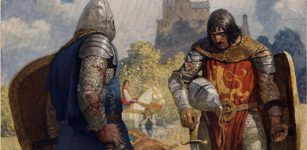 Most Of Medieval English Heroic Or Chivalric Stories Have Been Lost
Archaeology | Feb 18, 2022
Most Of Medieval English Heroic Or Chivalric Stories Have Been Lost
Archaeology | Feb 18, 2022 -
 Polycarp Of Smyrna: Burned At The Stake And Pierced With A Dagger
Featured Stories | Jun 25, 2020
Polycarp Of Smyrna: Burned At The Stake And Pierced With A Dagger
Featured Stories | Jun 25, 2020 -
 Incredible Prehistoric Discoveries Made By A Local Community That Helped Researchers
Featured Stories | Mar 23, 2023
Incredible Prehistoric Discoveries Made By A Local Community That Helped Researchers
Featured Stories | Mar 23, 2023 -
 Ancestral Puebloans Survived Devastating Climate Change Hiding In New Mexico Lava Tubes
Archaeology | Nov 20, 2020
Ancestral Puebloans Survived Devastating Climate Change Hiding In New Mexico Lava Tubes
Archaeology | Nov 20, 2020 -
 3D-printed replica of an artefact revives music of Iron-Age Ireland
News | Sep 4, 2015
3D-printed replica of an artefact revives music of Iron-Age Ireland
News | Sep 4, 2015 -
 Unknown Highly Advanced Civilization Created Malta’s Cart Ruts With Sophisticated Machinery
Ancient Technology | Apr 26, 2014
Unknown Highly Advanced Civilization Created Malta’s Cart Ruts With Sophisticated Machinery
Ancient Technology | Apr 26, 2014 -
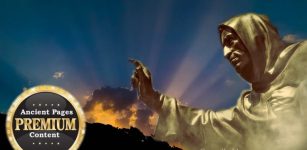 Unexplained Lights Over English City Reported By Police May Have A Deeper Meaning
Featured Stories | Dec 11, 2019
Unexplained Lights Over English City Reported By Police May Have A Deeper Meaning
Featured Stories | Dec 11, 2019 -
 Undeciphered Ancient Code Could Be Evidence Of The World’s Oldest Data Storage System
Archaeology | Feb 27, 2014
Undeciphered Ancient Code Could Be Evidence Of The World’s Oldest Data Storage System
Archaeology | Feb 27, 2014


